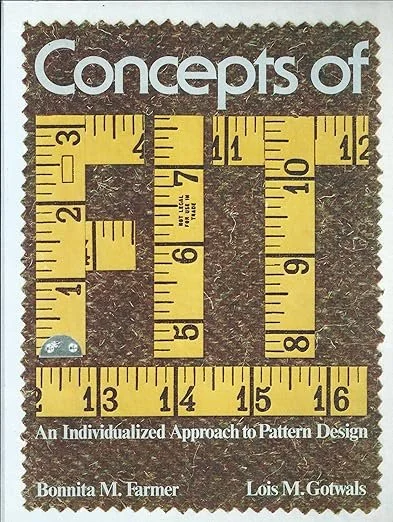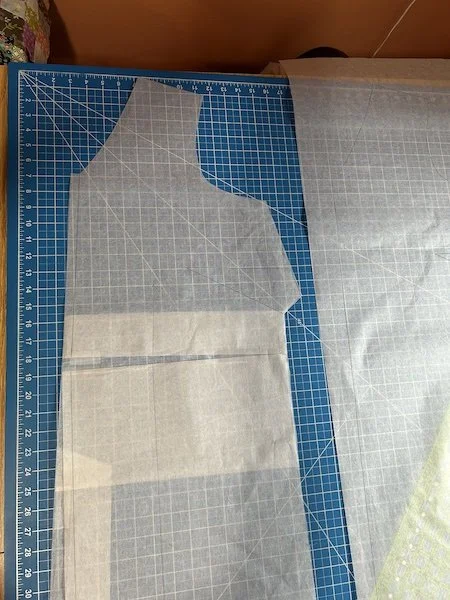Fitting Help From the Universe
I think I have the answer to this fitting issue. Let’s recap:
• I started this process with a woven top pattern that fits me very well. The darts are the correct size and their placement is perfect. The shoulders don’t bind. I’ve made four tops using this pattern and all of them are in heavy rotation at the moment.
• I lengthened the top pattern into a dress, mashing it up with the Amarena Dress pattern from Liesl + Co. The first muslin had the very obvious problem of drag lines running diagonally from underneath the bust to the sides of the dress.
• I consulted the Jan Minott drafting book, the Sarah Veblen fitting book, and some archived posts in the Sewing Pattern Review online forum. The diagnosis accompanying the wrinkle chart in the Minott book indicated that “The front is too short in relation to the back length OR the front may be correct, but the back might be too long.” The Veblen book indicated that the darts needed to be adjusted/taken in. The consensus of the forum posts was that the drag lines indicated that the dart intake needed to be increased.
• I spent the next two days and several muslins attempting to correct the problem at the dart level and succeeded only in making a few dresses that would have fit Dolly Parton nicely.
• Completely by accident—because the universe is in the habit of leaving bread crumbs here and there for me to follow—I unearthed this book in the basement while looking for something else:
What the heck, let’s see what Bonnita and Lois have to say.
Under the section about bodices, it says, “Some patterns need to be altered in length only at the center front or back because of a prominent stomach or curved back.” I have neither of those issues, but I do have a mountain range in the center of my chest over which the fabric has to traverse. And when I put on the muslin and looked in the mirror, the solution was blindingly obvious. I needed more fabric, but only in the center front. Lengthening the entire bodice—per the Minott book—would not have solved the problem because the sides needed to be preserved at their current length. I got a pair of scissors and sliced a horizontal line across the center of the dress just under the bust and dropped it about an inch and the drag lines disappeared.
🤦🏻♀️
Bonnita and Lois’s book gives three methods for altering patterns: the internal method, the slide method, and the seamline method. Which one to use depends on the situation and personal preference. I used the internal method, which directed me to slice the pattern to the seamline, leaving a “hinge,” and move the center of the pattern down the required amount, like this:
I then had to true up the center front and redraw the grainline.
I made Yet Another Muslin with this adjusted pattern and it worked. Hallelujah. At that point, I had no desire to sew anything else so I sat down and read a book. I still don’t have a dress, but I am hopeful.
What have we learned from this little exercise?
The adage “Drag lines and wrinkles point to the problem” is useful only insofar as you can identify which part of the pattern needs to be altered. Commenters in the SPR forum kept saying that drag lines like the ones I was seeing indicated that the garment was trying to create its own darts, which is sort of true. But there were darts in the pattern that fit me well, so why would I want to change them? The solution was actually found at the other end of the drag lines, in the center of the garment.
It helps to consult several resources, because some of them may be incomplete or—heaven forbid—give inaccurate information. I like the Minott book especially because of the wrinkle charts, but it wasn’t until I got to the Concepts of Fit book that I found a solution.
A full bust adjustment may not be enough. The bodice of my custom woven top pattern is based on the Cadence Top from Love Notions. I used the full bust option of that pattern, which already had the FBA baked in, but clearly, I needed an additional adjustment.
I am too stubborn to give up.
I’ll probably go back to my woven top pattern and make a similar center front alteration just for the sake of completeness. This adjustment will be added to the list of alterations I might have to make before I use a pattern. And I think the next project may be the French Dart Shift. I know I am going to have to do an FBA on that pattern, so I’ll be curious to see what happens.
Beth H., I hope you enjoyed this post. 😄


